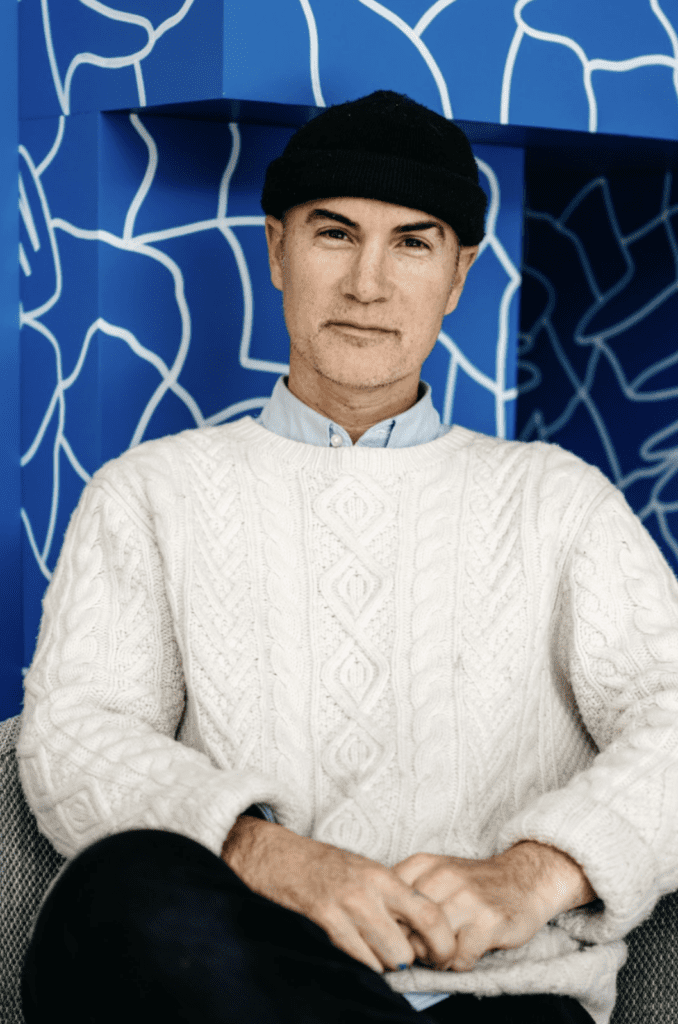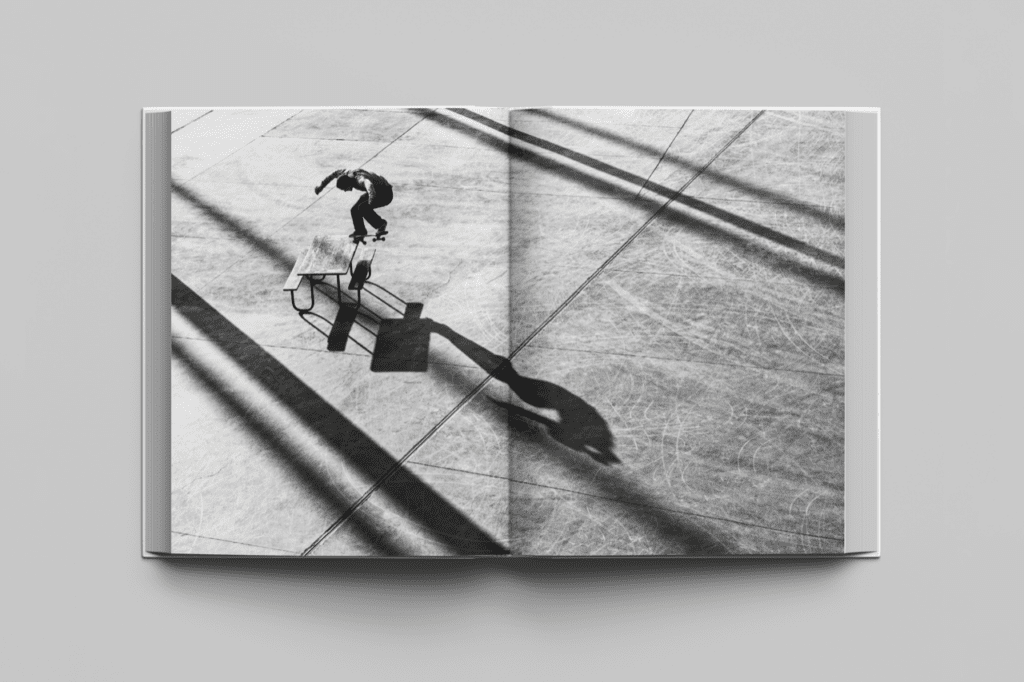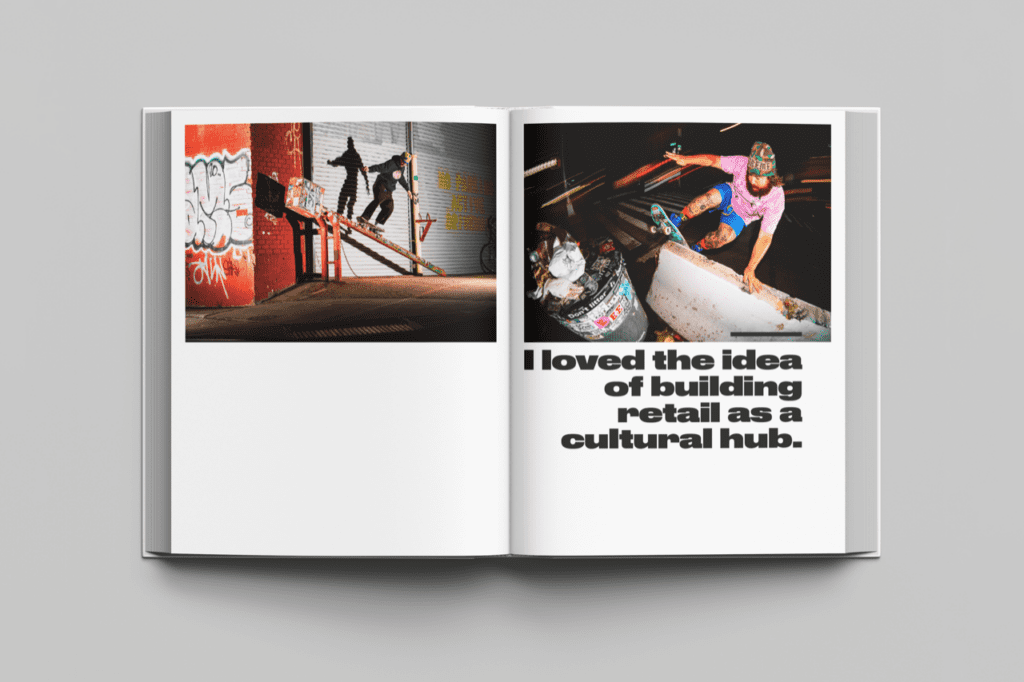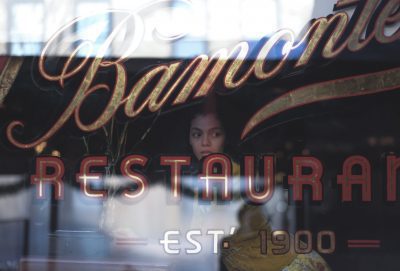A new photo book showcases skate shops in New York — and everywhere else
Lucas Beaufort assembled ‘Heart’ from home; now he’s on a world tour. First stop: Brooklyn
“You need a big heart to run a skate shop,” says Lucas Beaufort, a French visual artist, filmmaker and lifelong skateboarder who turned his quarantine confinement into a yearslong quest to document and celebrate the world’s most iconic skateboarding hubs.
Beaufort’s efforts culminated in a bold book of photography called “Heart,” which highlights over 90 skate shops, their die-hard owners and four decades of skate history.
Across 428 pages, readers will find personal interviews and classic skate-mag photos, which help make the case that amidst an onslaught of digital retail and social media, skate shops remain an essential analog to harnessing the soul of skate communities worldwide.
“Skate shops are the guardians of our culture,” New York-based skater and Stoops Magazine founder Eby Ghafarian writes in the book.
Because “Heart” was born out of forced solitude, Beaufort has made it a point to travel to the shops included in the book. His U.S. tour kicks off April 12 at Tenant skate shop in Bed-Stuy, where Beaufort and Pabst Blue Ribbon will curate an art show with local artists, photographers, skaters and more.
Brooklyn Magazine caught up with Beaufort, whose native language is French, to discuss his creative process behind “Heart,” how skate culture is becoming more inclusive, and why skate shops are still essential.
This interview has been edited for concision and clarity.


‘I don’t want to see people on their phones’ (Courtesy of Beaufort)
Tell me about the first time you ever stepped on a skateboard. How did it feel?
I got my board in my little village near the city and I tried to go over the sidewalk and it was just impossible. But when I brought my board to the city by the real scene, I saw magazines and I saw everything I needed to understand that I was about to enter a big world.
When did you stumble upon a real skate community?
It was 1994, when I was 13. We were a group of people skating in Cannes. We were just in the streets, there were no skateparks. I met friends instantly and it was the beginning of everything.
“Everything” like what?
Skateboarding taught me that everything wasn’t just in your neighborhood. You have to explore the world. After skating in Cannes for a couple months, people told me about a big bowl in Marseille, then something in Barcelona and it went from there. I travel half the year now, and everywhere I go I know skaters. It’s also helped me use my imagination. We didn’t have a skatepark back then so you had to make use of stairs and ledges and just define the world around you — as a playground.
When did you get the idea to create “Heart?”
As an artist I was used to traveling constantly, but when Covid hit I got depressed. Everything was canceled. I thought about all the friends I visited in the past from Japan, Europe, the U.S. — all the ones running skate shops — and I started to reach out, like, “Would you be down to help me make a book celebrating the history and culture of skate shops?” I was surprised a book like this didn’t exist.
How did it come together?
I made a few calls and did everything by email. It took me a year. Which is why I’m doing this tour now, so I can actually visit and celebrate the people I interviewed and the local community. We have to remember that a skate shop isn’t just where you get products but it’s home to musicians, artists, filmmakers, skaters etc. It became obvious to me that I needed to go further with the book and visit all these people. I traveled to Japan first, then Europe and now I’m ready to head to the U.S.


A spread from ‘Heart’ (Courtesy of Beaufort)
How many shops did you highlight in the book?
Ninety-two. When you do a book like this, you need to make sure you don’t forget the good ones. I already knew about 75 percent of them from working with them in the past, whether it was creating a board graphic or shirt graphic or an event. I asked my friends for help identifying other great shops in each area.
What did you want to learn from the skate shop owners you spoke with?
Mostly why they decided to open a skate shop and what it’s like running one with so much online competition.
This is actually a theme I’ve noticed in your work, including this book — a sort of celebration of physical media and brick and mortar shopping.
Man, I don’t know if you’ve see this [points to VHS tape] but it’s “Eastern Exposure Zero,” one of my first skate VHS’s and I still have it and feel connected to it. I feel like we are so disconnected now, with Instagram and smartphones and online shopping. I don’t want to see people on their phones, I want to see them hugging and smiling and talking to each other. And you know, that’s the meaning of this phase of the book: the tour, meeting people for real.


A spread from ‘Heart’ (Courtesy of Beaufort)
Are books and physical print magazines still popular in the skate community?
I think so. In Europe there are still a lot of skate magazines. You have “Free Skateboard Magazine” out of the U.K., “Solo Skate Mag” from Germany, “Sugar” in France. There’s probably like eight to 10 skateboard magazines full of photos, and in the U.S. there’s “Thrasher,” of course. A long time ago they used to say books would disappear but they’re still here. “Heart” will not be the last big book in skateboarding. And I might even do a second issue.
I noticed that there aren’t many women included in your skate magazine documentary, “Devoted,” or “Heart” for that matter. Why is that?
It’s a shame bro. When I think about “Devoted,” there’s no girls, how the fuck did I not think about it? But go to “TransWORLD”? No girls. Go to “Thrasher?” There’s no girls. It’s changing, though. Antisocial, a skate shop in Vancouver, is run by a girl named Michelle and she’s been running it for like 25 years. She’s a pioneer. I can’t wait to be there and interview her in person because out of the ten stops on this tour, she’s the only girl who runs a skate shop. There’s all these girls now, skating; I’d love to see them open shops. It’s time.
So you’re coming to Brooklyn this week, what should we expect?
Honestly, it’s gonna be surprising. We were originally going to showcase KCDC, a legendary skate shop from Brooklyn that’s been around for over 20 years, but we ended up going with Tenant, a fairly new shop. So I’m going to meet a new community, and document and interview people on film. It’s the first stop on the U.S. tour; it’s all going to be new to me.
To take part in the festivities, roll over to Tenant at 1096 Dekalb Avenue, between Broadway and Malcolm X Boulevard — on the border of Brooklyn’s Bed-Stuy and Bushwick neighborhoods — on Friday, April 12, between 6pm and 9pm.
You might also like 



























